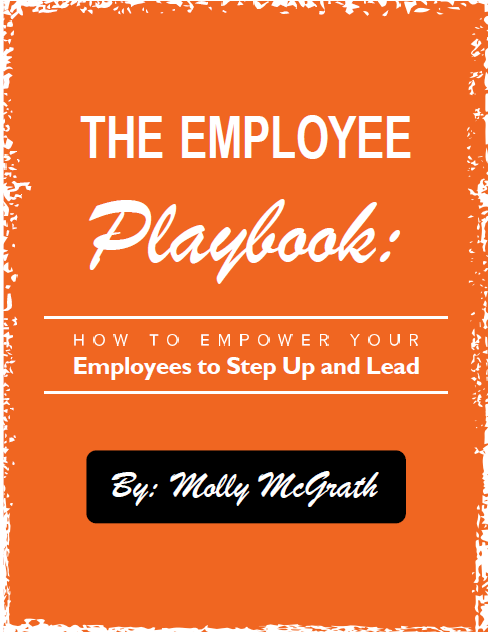Three Ways to End a Meeting Pronto!
- Palm a paperclip off the table and use it to cause bodily injury to yourself or others. Once the blood is flowing freely, you have a clear shot to end the meeting.
- Fake a faint if the meeting is bad enough that you would prefer to spend the next three hours in the emergency room.
- Use your cellphone under the table to discreetly text someone to call in a bomb threat to the building.
These may seem a bit extreme, but we’ve all been in that meeting that is so long, so boring and so useless that these have actually been considered, at least momentarily. I’ve worked with, and at times joined the ranks of, the most vicious meeting-haters known to mankind. Oddly enough, I’ve set and run meetings with these same people at their request, and they attended with pleasure and, dare I say, excitement. What’s the difference? A meeting for meeting’s sake, or a meeting with no results achieved, is torture. A meeting with a clear set of goals that others also want to accomplish, during which you actually make movement toward those goals, is getting results – and intrapreneurs crave results.
(Note – weekly team meetings should really be huddles, not “meetings.” Make them quick, to the point, high energy, with a goal of preparing you for the week. “Meetings” are longer and have a purpose of completing casework, working on a project, tackling a problem that needs a solution, etc. They are a more in-depth get-together.)
Here are 14 techniques for creating and running meetings that your team will be excited to attend and no one will injure themselves to get out of.
- Create agendas
Every meeting, big or small, should have an agenda. The agenda must be created ahead of time and released to all attendees. Aside from letting people know what they need to bring and be prepared to discuss, it shows respect for their time. Rather than saying, hey, come give me three hours of your day to discuss something, it specifically lists what you will discuss and what you want to achieve. It also lets the brain start percolating and helps people come to the meeting with ideas, rather than starting cold. Don’t be too ambitious with your agenda. Keep it bite-sized so you can actually accomplish what you set out to do. It’s an agenda, not a to-do list.
- Pre-set agendas
For recurring meetings, have a pre-set, agreed-to agenda. First, no need to keep recreating the wheel each time. Second, it gives structure to your team. They will know they have a set time to bring up issues, which decreases interruptions throughout the week. See our Monday Morning Team Huddle and Monday Morning Check-in agendas.
- Set an end time
When a meeting is scheduled, it should always have an end time. This lets everyone know how to handle their schedules. It also lets you know what is reasonable to tackle. The time keeper should have an alarm set for 10 minutes prior to the end time to announce a time check.
- Decide who is attending
Not everyone needs to be in every meeting. That is sloppy planning and sloppy thinking. Decide who has vital information or is a decision-maker for the meeting, then invite them in advance. Don’t think about who should be there when the meeting starts and go interrupting others. That’s a quick way to have uncooperative meeting-haters!
- No interruptions
The Golden Rule – no exceptions. Let everyone know prior to the meeting that there will be no interruptions, and define what you mean. That means no phone calls, no emails, no knocking on the door, no yelling through the door, no asking, “Got a minute?” Let the entire team, even those not attending the meeting, know not to interrupt you. Put a sign on the door that says, “No interruptions, yes that means you, the one with their hand raised about to knock on the door….” And most important, follow the rule yourself and set the example. If you allow an interruption, they will never go away.
- Coffee/snacks
You will save time and maintain focus by bringing in a thermos of coffee with all the fixings so no one has to step out to grab a fresh cup, which turns into a 20-minute trip with five stops to check email, hit the restroom and get asked four quick questions. If the meeting is more than an hour, bring snacks too.
- Check your smartphones at the door
Have them turned in. This eliminates the urge to take a quick peek.
- Time manager
Appoint someone to manage the agenda and keep the conversation moving. This person has authority to end discussions and set them to another time.
- Defer longer conversations to the end
Conversations that deter from the agenda should be set aside to another appointed time. If you constantly go off-track, your meeting will be a lot of discussion with no resolution or action. People may revert to the pencil-in-the-eye trick. Allow your time manager to end off-track conversations and set them for another meeting. Do the same for topics for which you do not have all the research or information to have a meaningful conversation. People love to waste time on hypotheticals before the basic facts are researched.
- Time checks
Your time manager should periodically give time checks of the remaining amount of time to keep things moving.
- Scheduled breaks
It’s a given – if one person steps out to go to the restroom, everyone suddenly has to go. And there goes the momentum of the meeting. Set scheduled break times and watch how people can manage to wait until then to go. (Really, meetings should last no more than one hour.)
- Set expectations – what kind of meeting
There are different kinds of meetings. Brainstorming meetings, meetings where research is reported and decisions are made, working meetings where things are actually created and revised. Be sure to set the expectation of what kind of meeting this is. You don’t want someone brainstorming during a decision meeting.
- Set a goal
Be clear on what you want to accomplish in this meeting. Doing this helps keep you and the team on track and focused, letting everyone know what you are working toward. A goal can be, “We will have our mission statement finalized by the end of this meeting.” - Learn more about communicating and teach your team!
Eighty percent of meeting time is wasted by poor communication. Time is wasted re-explaining, apologizing or by someone simply shutting down in a meeting due to miscommunication. Use this website and Intrapreneurs in an Entrepreneurs World to learn how to communicate and increase your results.
Need help hiring intrapreneurs or supporting your employee in becoming one? Contact us at info@yeschick.com.
By Laney Lyons-Richardson


